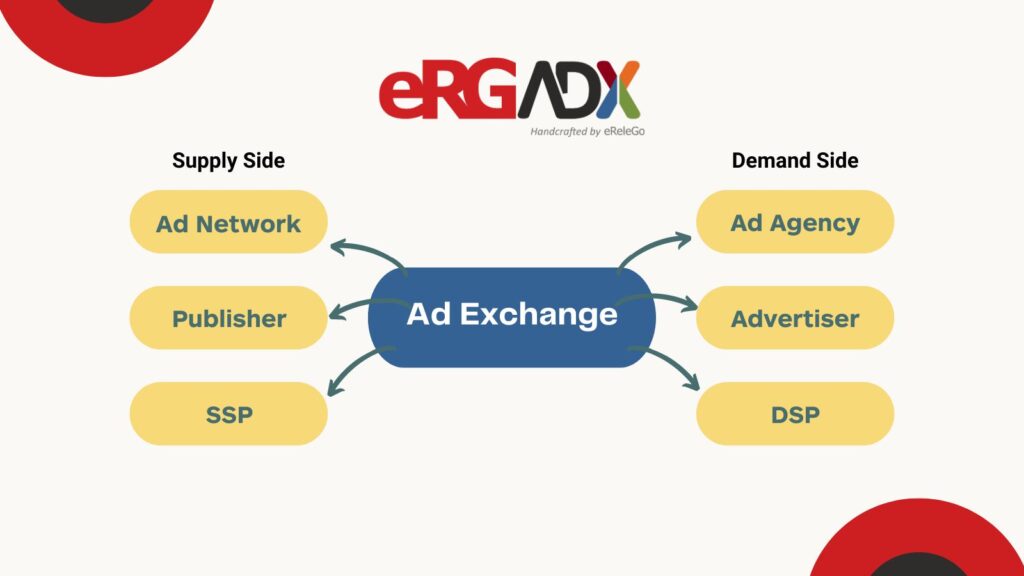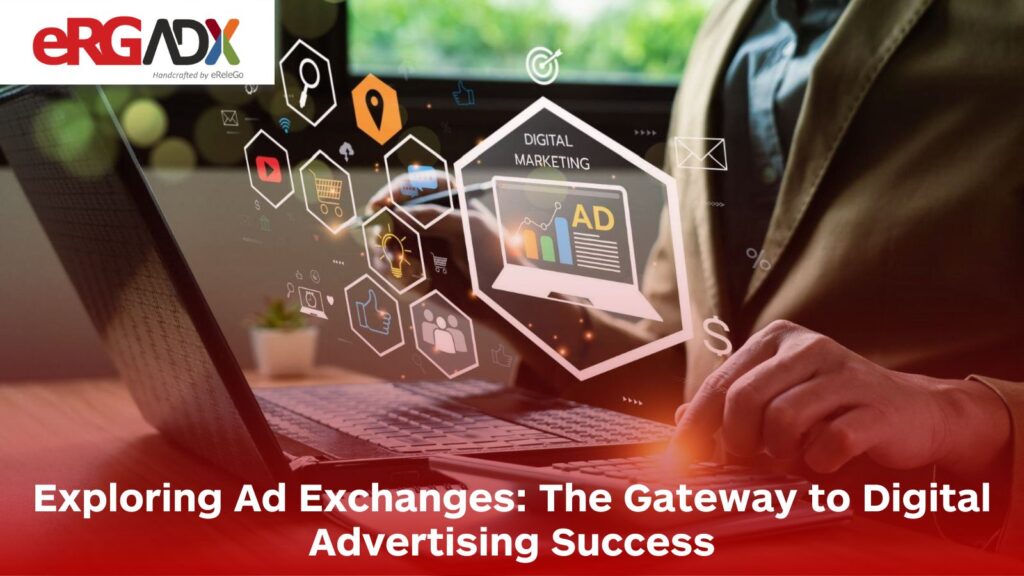In the fast-paced world of online ads, making money and reaching the right people is super important. That is where ad exchanges step in. Knowing how they work and what they are good for can really help make your online ad strategy better. Read the entire blog a read for an all-inclusive view of ad exchanges, their operation, and why they are crucial for boosting income and accurately hitting your target group.
Table of Contents
- What is an Ad Exchange?
- How Does it Work?
- Ad Exchange VS Ad Network
- Types of Ad Exchanges
- Benefits of Using Ad Exchange
- Conclusion
What is an Ad exchange?
Ad Exchange is like a virtual bazaar for advertisements. It is where folks buy and sell ad places instantly using automated systems. Ad exchange is an intermediary between the ones who have the space to advertise, the publishers, and those who desire to display their promotions, the advertisers. Within this lively marketplace, ad space is put up for auction by publishers. Advertisers aim to capture their audience’s attention using several types of ads like display, video, and mobile ones.
How does it work?
Ad exchanges work in a complex, tech-based way, mostly powered by instant bidding or RTB (Real Time Bidding). Picture publishers using supply-side platforms, or SSPs (supply side platforms), like a bridge. They connect ad spaces they must the ad exchange. SSPs help control inventory and set minimum prices. Now, advertisers come in. They use demand-side platforms, DSPs (demand side platforms), to get to the ad inventory. DSPs let them pick who to target, decide on spending limits, and place offers.

A visitor step onto a publisher’s site. Swiftly, the SSP (Super-Slide Platform) relays a bid request to the ad exchange. It details the free ad space and user facts, respects privacy laws. Next, the ad exchange calls out this bid for DSPs, with time ticking. By marketers’ rules and money, DSPs appraise the appeal, bidding for ad views as fits.
An auction takes place on the ad exchange, with the top offer aligned to the publisher’s base rate winning. Next, the chosen advertiser’s ad gets displayed in the outlined ad spot on the user’s gadget. Tracking of performance then kicks in – monitoring every click, as well as impressions, whilst also managing money matters. The advertiser handles the bid cost via the DSP (demand side platforms) with the ad exchange subtracting its charge – the leftover cash then goes to the publisher through the SSP.
This streamlined process optimizes ad placements and pricing through real-time market dynamics, fostering efficient, automated, and transparent transactions in the digital advertising ecosystem.
Know more about DSP, SSP, RTB
Ad Exchange VS Ad Network
Ad exchanges and ad networks are essential elements of the digital advertising world, each with unique roles. An ad exchange works like an auction house, managing immediate bids for ad spots. On the other hand, an ad network works like a middleman, gathering ad options from creators and pairing these with the needs of advertisers.
Ad exchanges are like public markets. They let advertisers buy and sell ad views. This means advertisers can focus on certain groups and bid on each impression. On the other side, ad networks use set prices and often do not show ad placements clearly. Despite offering advertisers savings in time and resources through compiling ad stocks, ad exchanges give more power and flexibility to both advertisers and publishers.
Learn more about the differences – Click Here
Types of ad exchanges
- Open Ad Exchange: The open ad exchange is the most commonly known type. It is accessible to anyone, be it advertisers, agencies, or ad networks. Here, the inventory is available to all, fostering a competitive marketplace where advertisers bid in real-time for ad space.
- Private Ad Exchange: Unlike the open exchange, a private ad exchange is accessible only to specific advertisers. Publishers may choose this option to limit access to their inventory, ensuring that only select advertisers can display ads within their content. This also prevents ad networks from reselling a publisher’s inventory without permission.
- Preferred Deal: A preferred deal involves a direct negotiation between a publisher and an advertiser. They agree on a fixed price, usually at a premium, granting the advertiser a first look at the publisher’s available inventory. If the advertiser declines, the inventory proceeds to a real-time auction. This setup, often termed programmatic non-guaranteed, does not reserve inventory for the buyer, allowing flexibility in purchasing decisions.
Benefits of Using Ad Exchange
The Good Stuff About Ad Exchanges: Ad exchanges benefit both advertisers and publishers by making digital ad efforts better. Let’s look deeper into these bonuses:
- Flexibility with Ads: Publishers can decide how and where ads show up on their sites. They can match them with their brand look and steer clear of stuff they don’t want.
- Pricing Power: Publishers can set a base CPM for their ad spaces. That way, they keep control over their cash flow and make sure their income stays good.
- Ad Filters and Blocks: Publishers have the power to keep away from dodgy, spammy, or not-so-nice content. This reduces the chance of digital ad scams and assures good ad quality.
- Stopping Ads: Publishers can stop specific brands or ad series they don’t want. This helps control the brands linked to their content.
- More Choices and Better Shots at Success: Marketers and ad firms get more places to plant ads. This ups the chances of hitting the right targets and making the most out of the ad money.
- Budget Behavior: Advertisers can play around with costs and limits. They can use fancy bidding tricks to keep effective control over ad budgets.
- Ad Cadence Control: Advertisers can set how often ads come up for users. This stops too much exposure and makes sure they don’t feel stalked online.
- Banning the Bad Guys: Advertisers can blacklist certain ad spaces. They can make sure they won’t be linked to certain publishers if they don’t want to.
Conclusion
In conclusion, ad exchanges are essential for efficient transactions between advertisers and publishers, enabling optimization, revenue maximization, and effective audience targeting. Whether utilizing open, private, or preferred deals, these platforms offer diverse opportunities for success in programmatic advertising, shaping the future of digital marketing strategies.


